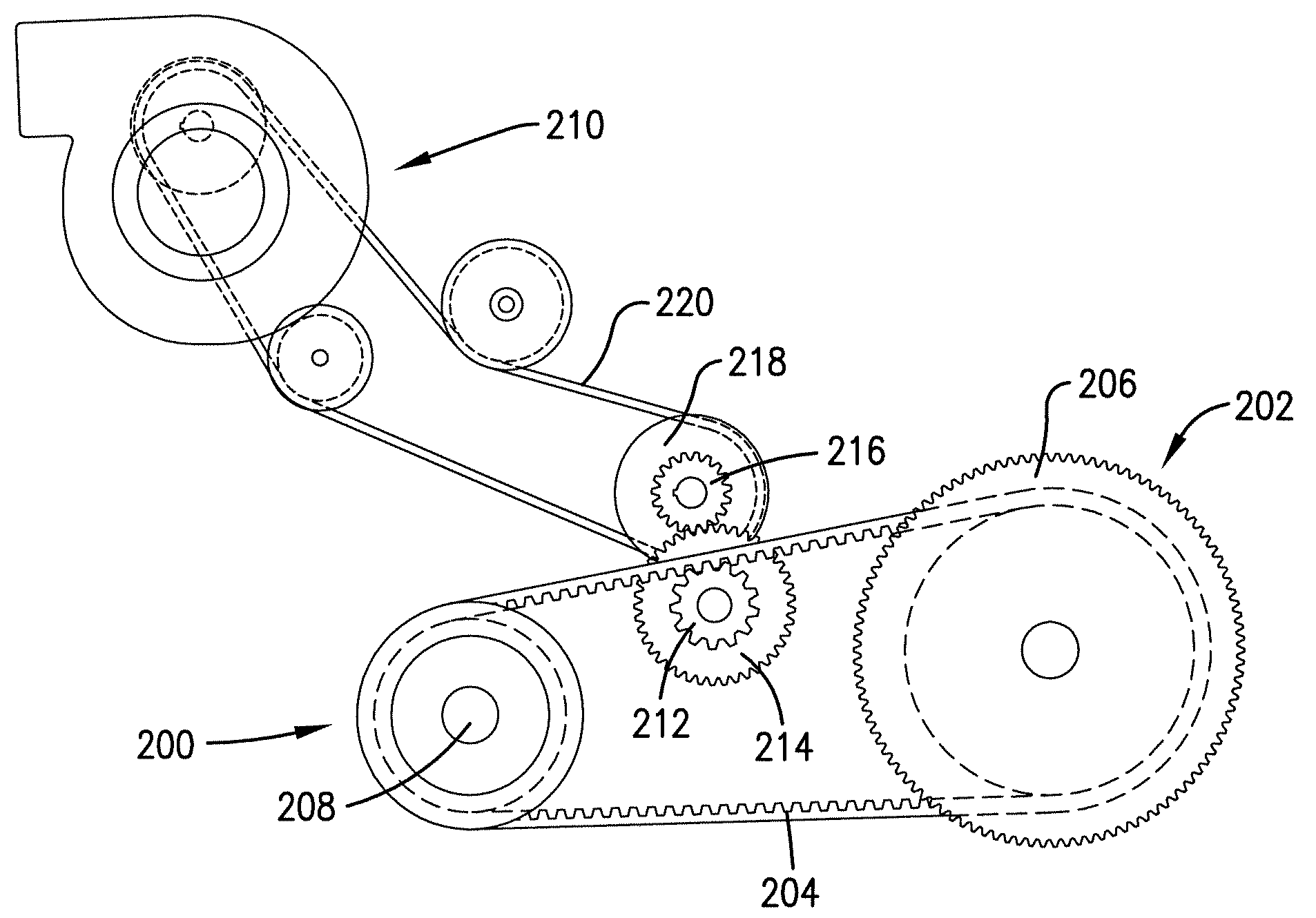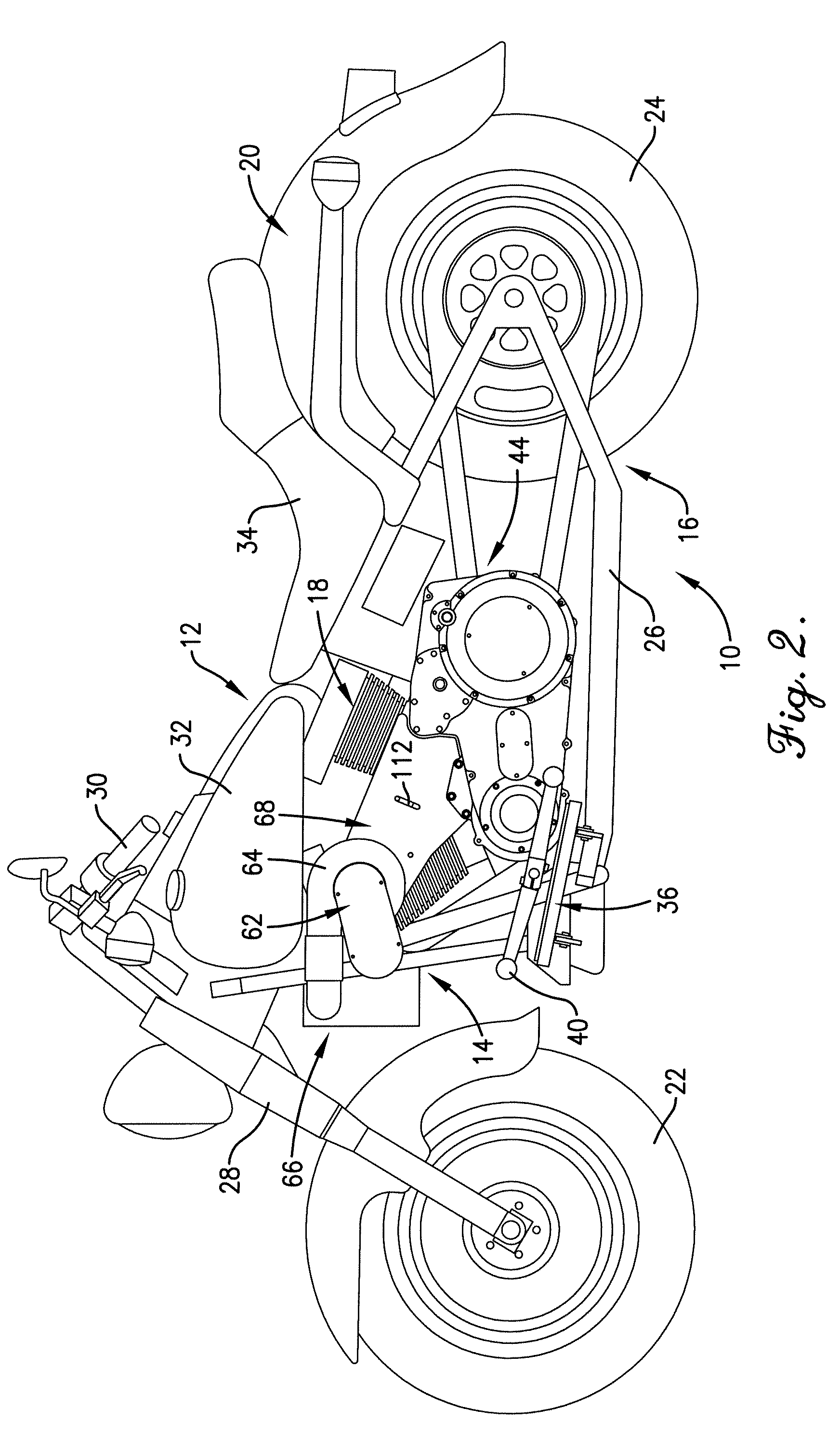Supercharged motorcycle
a supercharger and motorcycle technology, applied in the direction of machines/engines, combustion air/fuel air treatment, cycles, etc., can solve the problems of limited space in and around the crankshaft in which to position drive components, undeadly altering or interfering with the normal riding of the rider, and loathe to modify their motorcycle in any way that will materially alter or affect the original distinctive appearance and sound of the motorcycl
- Summary
- Abstract
- Description
- Claims
- Application Information
AI Technical Summary
Benefits of technology
Problems solved by technology
Method used
Image
Examples
Embodiment Construction
[0029]FIG. 1 illustrates a supercharged motorcycle 10 constructed in accordance with the principles of a preferred embodiment of the present invention and configured for mounted operation by a rider R (see FIGS. 7–8). As further detailed below, the principles of the present invention are particularly well suited for V-twin engines, such as the Harley-Davidson® V-twin engine illustrated in FIGS. 1–8. However, the principles of the present invention are not limited to any particular type of motorcycle engine and equally apply to virtually any type of engine on virtually any brand of motorcycle. Furthermore, many of the aspects of the present invention also apply to other all-terrain type vehicles, such as three-wheeled and four-wheeled vehicles wherein the rider straddles the chassis of the vehicle in a mounted operating position. The illustrated supercharged motorcycle 10 broadly includes a motorcycle 12 and an air induction system 14 configured to deliver compressed induction fluid ...
PUM
 Login to View More
Login to View More Abstract
Description
Claims
Application Information
 Login to View More
Login to View More - R&D
- Intellectual Property
- Life Sciences
- Materials
- Tech Scout
- Unparalleled Data Quality
- Higher Quality Content
- 60% Fewer Hallucinations
Browse by: Latest US Patents, China's latest patents, Technical Efficacy Thesaurus, Application Domain, Technology Topic, Popular Technical Reports.
© 2025 PatSnap. All rights reserved.Legal|Privacy policy|Modern Slavery Act Transparency Statement|Sitemap|About US| Contact US: help@patsnap.com



